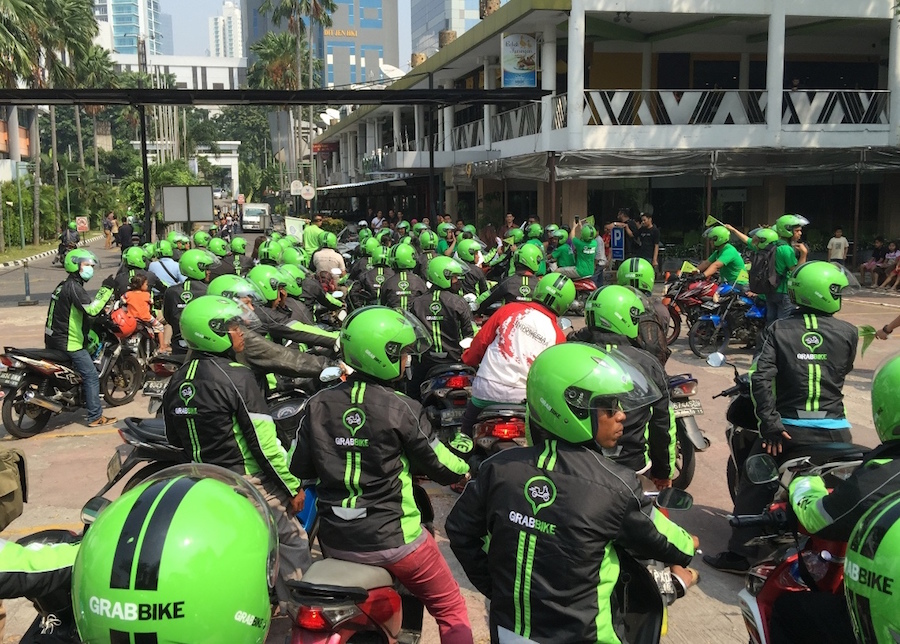Ask any motorcyclist how they feel about being a pillion and you’ll likely hear rumbles of negativity surrounding things like trust and discomfort. But ask those same motorcyclists if they’d prefer to sit in the back of taxi during Friday afternoon traffic watching the meter tick over at twice the rate of the odometer, and most of them would opt for the back of a safely handled, lane-filtering bike any day of the week.
Just last month, Honda South-East Asia signed an unprecedented deal with ridesharing company GrabBike. The Japanese motorcycle giant is not known for its daring or risky business practices, so if it’s jumping feet first into the sharing economy, then perhaps we ought to be taking notice.
Honda and GrabBike signed “a memorandum of understanding to collaborate on various initiatives to enhance benefits for GrabBike riders in all countries where GrabBike operates.” In other words, GrabBike wants in on the safety features and reliability offered from a Honda-branded motorcycle, and Honda wants a slice of GrabBike’s 350,000-odd registered riders as well as access to the 20 million consumers who have downloaded the GrabBike app.
The sharing economy, regardless of the product or service on offer, is growing at an exponential rate in every market of the world. To put it into perspective, Airbnb the, er, bedsharing service, amassed 600,000 rooms in its first four years. It took the Hilton hotel group 93 years to achieve the same outcome. Like it or not, it’s only a matter of time before the sharing economy will impact motorcycling and, with the right approach, it could be a good thing.

It’s not just Asia
While the densely populated and moped-mad South East Asian market is the perfect fit for two-wheeled ridesharing services, it’s beginning to appear in Western cultures, too, where the vehicles in question are large-capacity and mainstream top sellers.
The ridesharing service app Spyke was launched as the first motorcycle-only ridesharing platform in America at the beginning of 2014. It markets itself with the tagline, ‘get around with speed and style’ and, while jumping on the back of some-bloke-you-don’t-know’s Hayabusa wouldn’t be to everyone’s liking, the plucky company’s got a good point. “Our Spyke riders bring the speed and mobility of motorcycles, which far surpasses their four-wheel peers, to the ridesharing audience,” reads the description on the app overview on the app store.

Who’s in control?
The ridesharing concept in the automotive sector is being taken to another level with the slow but sure introduction of fully autonomous cars. Tesla founder Elon Musk’s car-sharing vision, for example, is that your self-driving car could be out making you money while you’re at work: “This would be something that would be a significant offset in the cost of ownership – most cars are only in use by their owners for five to 10 per cent of the day,” he said. In light of this, the world’s best-known ridesharing service Uber is jumping on the bandwagon with a fleet of fully autonomous Volvo cars of its own. Self-riding motorcycles are still a thing of fiction and will be for some time, but we’d be ignorant to think it won’t eventually happen. The unveiling of Honda’s self-balancing bike (AMCN Vol 66 No 14) proves it’s one step closer.
By Kellie Buckley











